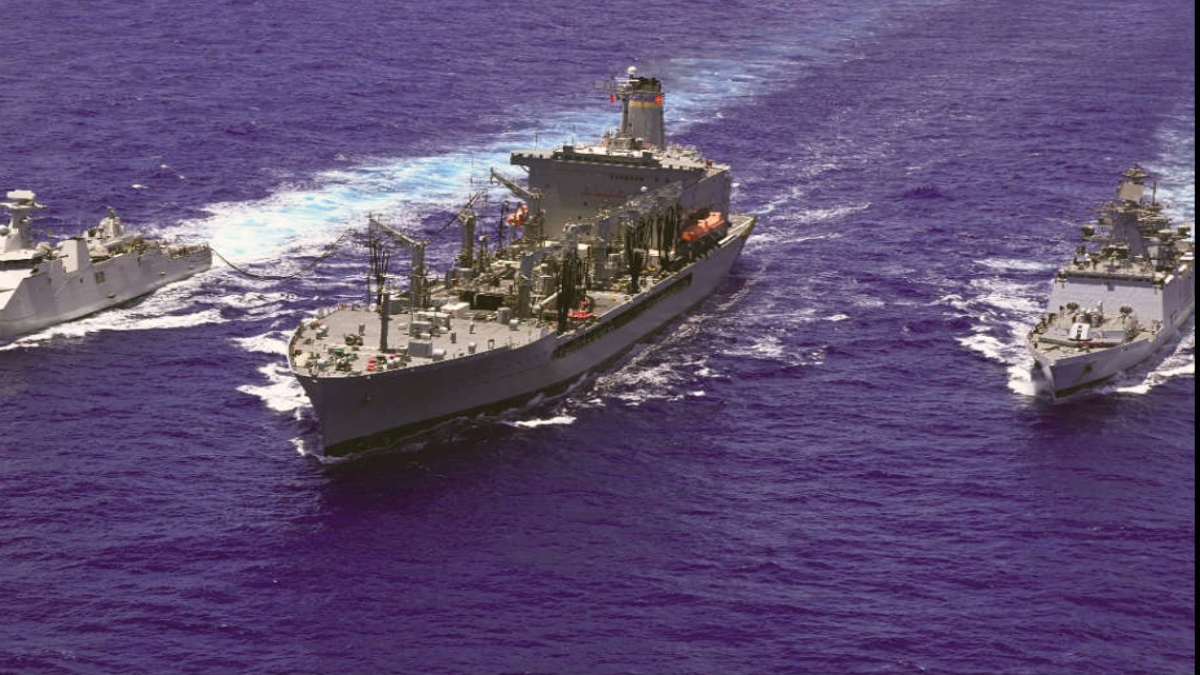


The very definition of the Indo-Pacific is equally puzzling and one that is still very much in its infancy. Looking at the possible tangents in which discussion surrounding what constitutes the Indo-Pacific geographically and what are the core issues to be addressed take shape, one may chance upon a rare opportunity to define not just the area, but also the subject matter of what it encompasses. The imminence of the shift from what was earlier called the geographical Asia-Pacific to the conceptual construct of the Indo-Pacific today betrays not just the geostrategic significance of the region, but also a certain bias that arises thereof. For India, this is an opportune moment to not just lead that discussion as we have done on the economic front in the developing multilateral fora like the G20.
What makes the Indo-Pacific particularly interesting is the foreign policy agenda it is setting forth for the region’s stakeholders. The genesis of this idea can be traced to the late Japanese PM Shinzo Abe’s “Confluence of the Two Seas” in the Indian Parliament in 2007. Although at this point, it was not so much a construct to counter China, in the future iteration of the concept by resident powers like the US, it became clearer that the concept grew out of a reactionary approach. The nemesis was identified from the offset in official statements arising out of Washington, and the focal points of US’s Indo-Pacific strategy were streamlined to give primacy to this idea. Washington recognises India as a pivotal partner in establishing an open, inclusive and rules-based order in the Indo-Pacific. However, it is a larger question as to whether this conception of the Indo-Pacific originating from the Eastern Pacific Ocean is limiting itself to one that is exclusionary and reactionary.
First, since India’s position as a lynchpin to the US’s Indo-Pacific strategy has been in the spotlight ever since the Indo-Pacific construct gained traction, one must look into the internal priorities when it comes to our national interests. For one, with a coastline of nearly 7,500 kilometres, most of our continental and maritime security challenges originate from the Western Indian Ocean encompassing the Arabian Sea, Northern Indian Ocean and the Eastern coastline of Africa. Therefore, for India, setting the definition right is extremely important to draw attention to this part of the world and the challenges rising thereof.
Second, attesting to the power of narrative in global politics, one might want to consider how an overarching consensus among western powers is emergent lately as to who is to be pushed back in terms of economic and military power. Beijing and Washington have had their differences before, but the colluded effort at isolating Beijing can be blamed on the pandemic and before that the aggressive inward-looking protectionist measures undertaken by the Trump administration. This beginning of a Cold War 2.0 was identified and advanced by Washington’s partners in the Indo-Pacific, albeit not without contradictions.
It is almost ironic that Washington’s rejection of Beijing’s posture in the Indo-Pacific may not be in the region’s best interests or agreeable to most of the resident nations. For starters, Indo-Pacific thrives, as goes the consensus, on ASEAN centrality. ASEAN shows certain levels of reluctance when it comes to engaging with the western-led Indo-Pacific construct because the regional grouping of 10 south-east Asian countries has active economic, socio-cultural and political-security relations with China. Beijing has lasting economic and security interests in ASEAN given all ten have joined China’s Belt and Road Initiative (BRI). China is also ASEAN’s largest trading partner mapping a growth of $680 billion and both being party to the Regional Comprehensive Economic Partnership (RCEP) essentially mean their commercial cooperation is expected to deepen. Additionally, the ASEAN nations have dialogue mechanisms with China to address territorial disputes in the South China Sea, and any order of events that upset this status quo is unattractive to the Southeast Asian nations. In fact, the regional grouping has long been vocal of their reservations in terms of nuclear proliferation about Washington-led AUKUS. Therefore, any rhetoric to counter China in the Indo-Pacific construct is a complicated matter and may actually require a nuanced approach. And finally, outside of the metanarrative about Beijing-origin military threats, the Indo-Pacific rhetoric excludes much needed discussions around non-conventional security challenges. The Quad, famously a non-military alliance, limits its activities to humanitarian assistance and disaster relief (HADR) and vaccine diplomacy from among the plethora of non-conventional and imminent threats in the region like climate change, migration, refugee crisis, regional instability and maritime security. And that grouping has a long way to go in terms of convincing regional powers to join the Indo Pacific Economic Framework (IPEF), announced in June 2022, which is also dubbed a counterweight to China’s BRI.
For Indo-Pacific as a construct to gain currency in the region, especially among the south-east Asian and Pacific Island nations, it must take cognizance of challenges and opportunities that go beyond conventional frameworks of systemic analysis. The most efficient way to go about it would be to have active dialogue mechanisms with difficult countries like China, rather than isolating them. In the event of a future alliance between China and Russia in the region, which need not seem too far-fetched at this point in history, the rest of the world must not feel left without the means to discuss and deliberate with them. At least in realpolitik, everything shifts and it is only a matter of time before allies and rivals realign themselves, again.
Sharon Susan Koshy is a Research Associate at the Centre for Public Policy Research.